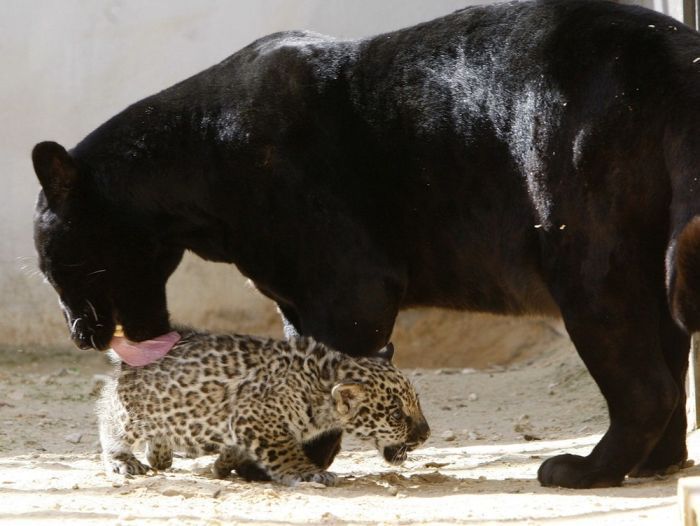|
|
Little Jaguar With Mom
|
Current conservation efforts often focus on educating ranch owners and promoting ecotourism. The jaguar is generally defined as an umbrella species – its home range and habitat requirements are sufficiently broad that, if protected, numerous other species of smaller range will also be protected. Umbrella species serve as "mobile links" at the landscape scale, in the jaguar's case through predation. Conservation organizations may thus focus on providing viable, connected habitat for the jaguar, with the knowledge other species will also benefit.
Given the inaccessibility of much of the species' range, particularly the central Amazon, estimating jaguar numbers is difficult. Researchers typically focus on particular bioregions, thus species-wide analysis is scant. In 1991, 600–1,000 (the highest total) were estimated to be living in Belize. A year earlier, 125–180 jaguars were estimated to be living in Mexico's 4,000-km2 (2400-mi2) Calakmul Biosphere Reserve, with another 350 in the state of Chiapas. The adjoining Maya Biosphere Reserve in Guatemala, with an area measuring 15,000 km2 (9,000 mi2), may have 465–550 animals. Work employing GPS telemetry in 2003 and 2004 found densities of only six to seven jaguars per 100 km2 in the critical Pantanal region, compared with 10 to 11 using traditional methods; this suggests the widely used sampling methods may inflate the actual numbers of cats.
In the past, conservation of jaguars sometimes occurred through the protection of jaguar "hotspots". These hotspots, described as jaguar conservation units, were large areas populated by about 50 jaguars. However, some researchers recently determined, to maintain a robust sharing of the jaguar gene pool necessary for maintaining the species, it is important that the jaguars are interconnected. To facilitate this, a new project, the Paseo del Jaguar, has been established to connect several jaguar hotspots.
|
|









